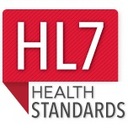 HL7 Spring Meeting in Atlanta
HL7 Spring Meeting in Atlanta
Health Level Seven (HL7) International is an organization that develops standards for exchanging electronic health information. The organization is ANSI accredited. ANSI is the American National Standards Institute which oversees the creation and use of guidelines that impact most business sectors. ANSI also accredits standards developing organizations. You can find HL7’s ANSI approved standards on their web site.
HL7 International has more than 40 work groups dedicated to specific areas of interest including Electronic Health Records. HL7 describes its standards as:
A framework (and related standards) for the exchange, integration, sharing, and retrieval of electronic health information. These standards define how information is packaged and communicated from one party to another, setting the language, structure and data types required for seamless integration between systems. HL7 standards support clinical practice and the management, delivery, and evaluation of health services, and are recognized as the most commonly used in the world.
Most might know standards when it comes to messaging. HL7’s original standards through Version 2 used a serialized chain of information as the structure. When additional information needed to be transferred, it was added to the end of the chain not to upset the standard serial of information. Version 3 was created to solve the limitations of serialized structures. With reference information models (RIM) these defined data dictionaries allow for a more flexible structure. These newer standards could now exchange documents.
Three times a year, the organization holds Working Group Meetings. The six days of meetings give member a chance to physically meet, work, and network with worldwide industry leaders. The meeting also serves as an educational setting for the healthcare IT community. The second of this year’s meetings was held in Atlanta last week and I spent a day there. They had an educational track dedicated to standards selected for meaningful use. It provided overviews and strategies for implementers adapting to the standards. The standards included Consolidated Clinical Document Architecture (C-CDA), Laboratory Reporting Interface, and Immunizations.
I sat in on the HL7 Standards for Meaningful Use session. It reviewed the EHR Incentive program and discussed the standards related to meaningful use. The instructor was Gora Datta, CEO of the CAL2CAL Corporation . Gora is an HL7 Corporate Member and Ambassador. He is also the Co-Chair of the HL7 Mobile Health Work Group. CAL2CAL is an Independent Software Vendor and its core focus is innovative application of Information and Communication Technology and Mobile technology. They are a service provider for one of California’s Regional Extension Centers, CalHIPSO.
I was able to catch him after the session to ask him about the benefits of his company involvement in HL7. Being able to have input in development of processes that will impact your development is important. He encourages other health IT development organizations to make a difference and be “early in the game.” Listen to Gora discuss the benefits of getting involved with HL7.
